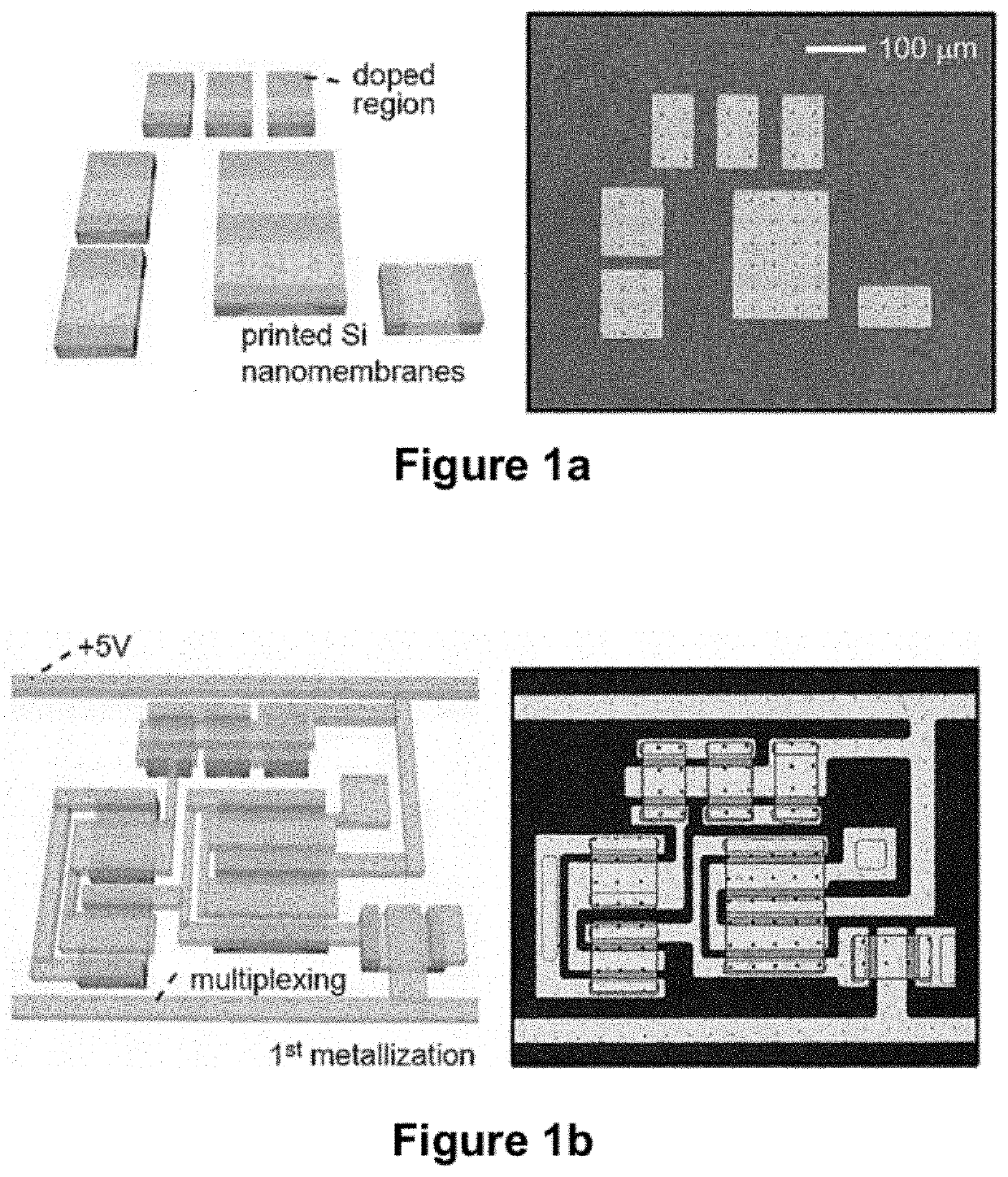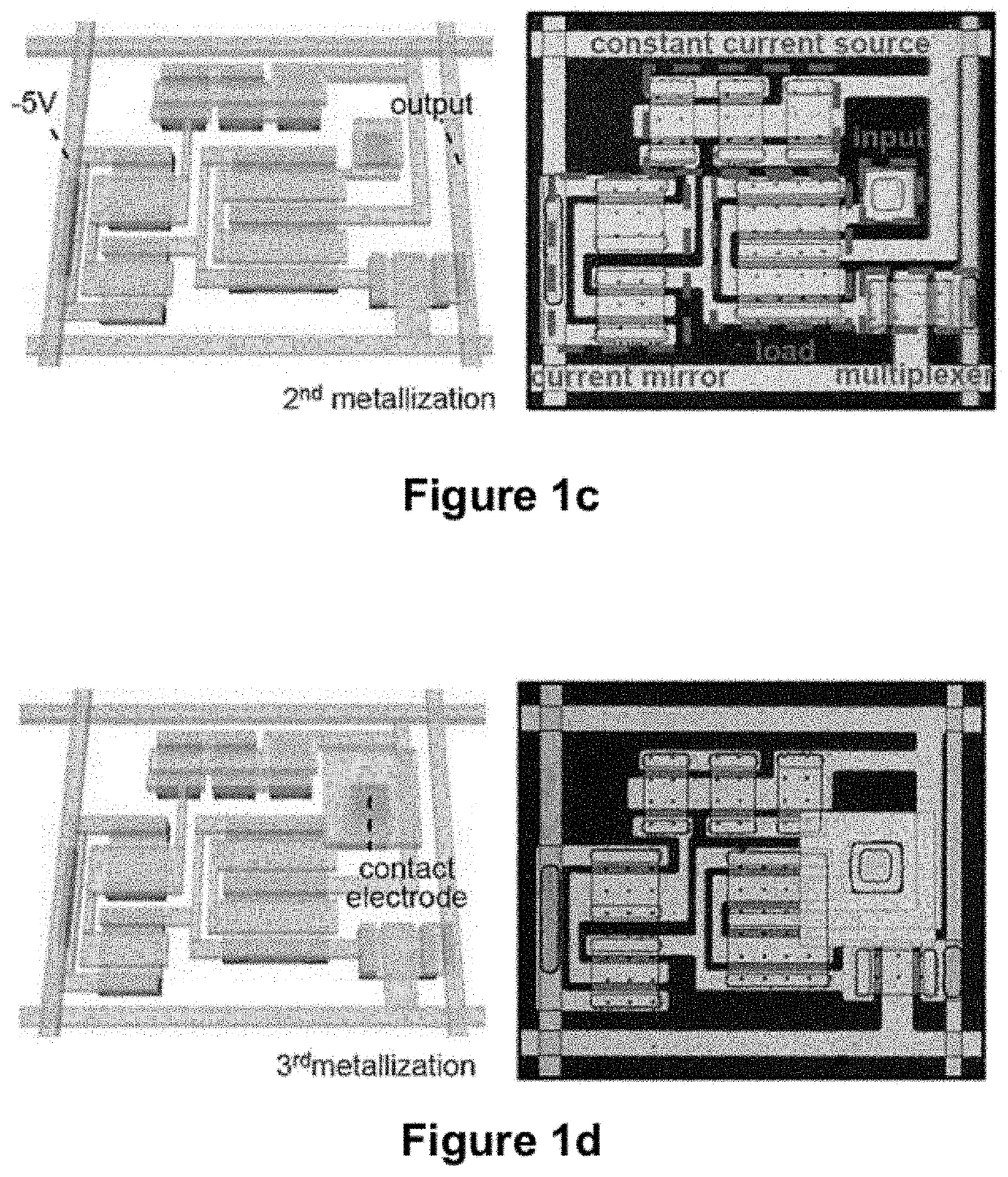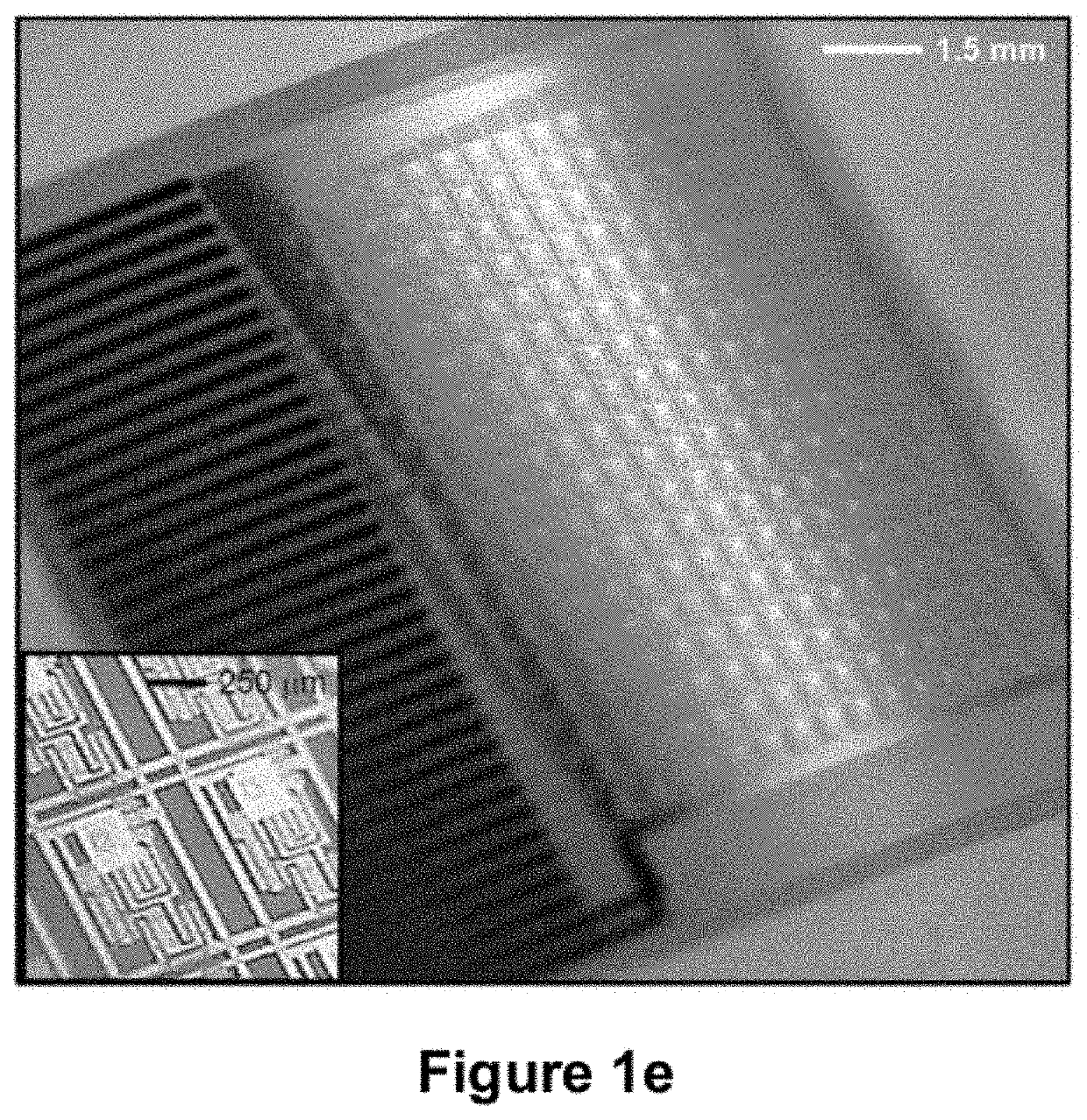High-speed, high-resolution electrophysiology in-vivo using conformal electronics
a conformal electronic and high-resolution technology, applied in the field of medical devices, can solve the problems of brittle mechanical properties associated with conventional ics that strictly exclude non-destructive, intimate integration, and prolong ep procedures, and achieve the effect of limiting the net leakage curren
- Summary
- Abstract
- Description
- Claims
- Application Information
AI Technical Summary
Benefits of technology
Problems solved by technology
Method used
Image
Examples
example 1
d, High-Resolution Cardiac Electrophysiology In-Vivo Using Conformal Electronics
[0194]Mapping cardiac arrhythmias with standard, clinical electrophysiology (EP) devices can be a tedious, lengthy process, particularly over the epicardial surface. Probes with small numbers (4-10) of widely spaced (2-5 mm) passive electrodes sequentially record electrical activity from small areas of heart muscle as they are moved manually, point to point, across regions of interest. Because each electrode requires a separate connection to external processors, spatial resolution and mapping speed are limited by practical constraints on the number and configuration of electrodes and wires that can fit in the device. This example describes a high resolution, high speed system that eliminates these constraints. The device uses fully integrated, conformal electronic circuits (built with >2,000 single crystal silicon nanoribbon transistors) to simultaneously record from 288 multiplexed (16:1) channels, each...
example 2
r Encapsulation for Enhanced Moisture Barrier
[0249]One advantage achieved by encapsulation is prevention of leakage current from electronic circuitry to a surrounding conductive solution, such as saline solution, while the contact type metal electrode that is connected to the gate of load transistor is exposed to the surface to make a conformal and intimate contact to the curvilinear, soft cardiac tissue. This example describes a multilayer encapsulation structure to enhance prevention of leakage current.
[0250]Multiple Layer Structure with Mis-aligned Via Structure. The encapsulation can be a single polymer layer or in can be a multilayer structure. If a single polymer layer (e.g., ˜20 μm) is used, pinholes can form following a dry etching process for via interconnect due to incomplete masking. Such pinholes can be prevented, for example, if a photo-definable thick polymer, such as SU8, is used, since the etching process is not needed. For a one layer structure, a mis-aligned via st...
example 3
of a Conformal Electronic Device for Sensing or Actuation
[0259]FIG. 26A provides a schematic illustration of a cross sectional view of a conformal electronic device embodiment for sensing or actuation of a tissue in a biological environment. Conformable device 100 comprises flexible or stretchable substrate 110 supporting a flexible or stretchable electronic circuit comprising plurality of inorganic semiconductor circuit elements 120, such as electronic device components including sensors, actuators, electrode arrays, LED arrays, optical sources, integrated circuits, multiplexing circuits and / or amplifiers. Barrier layer 130 encapsulating at least a portion of the flexible or stretchable electronic circuit may provide a moisture barrier, a thermal barrier, an electromagnetic barrier, an electrical barrier, a magnetic barrier, a selectively permeable or impermeable barrier or any combination of these. In some embodiments, the flexible substrate, the flexible or stretchable electronic...
PUM
 Login to View More
Login to View More Abstract
Description
Claims
Application Information
 Login to View More
Login to View More - R&D
- Intellectual Property
- Life Sciences
- Materials
- Tech Scout
- Unparalleled Data Quality
- Higher Quality Content
- 60% Fewer Hallucinations
Browse by: Latest US Patents, China's latest patents, Technical Efficacy Thesaurus, Application Domain, Technology Topic, Popular Technical Reports.
© 2025 PatSnap. All rights reserved.Legal|Privacy policy|Modern Slavery Act Transparency Statement|Sitemap|About US| Contact US: help@patsnap.com



